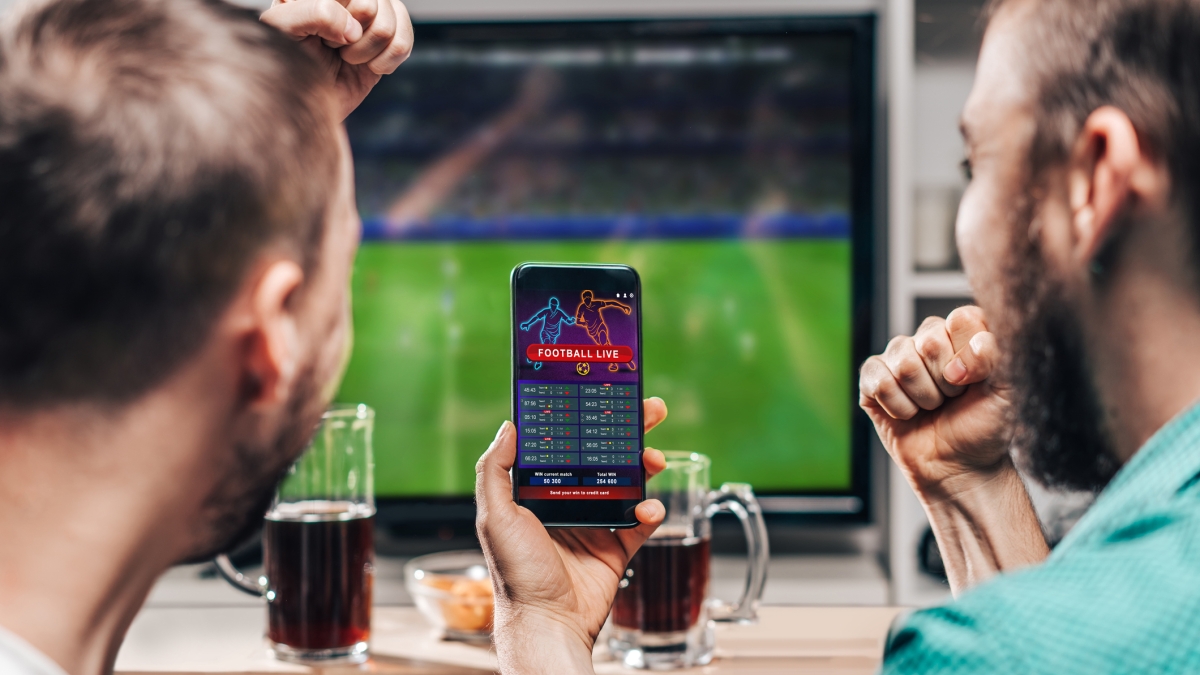People who don’t gamble don’t really care about those who do.
Those who do gamble?
Young Hispanic and Black males. White males who make more than $100K a year. And a surprising number of young women.
Those are just some of the findings in a new Arizona State University-sponsored poll regarding sports betting.
Conducted by the Global Sport Institute in early January, the 59-page study examines the driving forces behind the acceptance and awareness of sports betting.
ASU News consulted Daniel McIntosh, a senior lecturer with the W. P. Carey School of Business at Arizona State University, to discuss the results of the study and why most people don’t care about a $200 billion industry.
Daniel McIntosh
Question: Why did the Global Sport Institute want to undertake this study given the conclusion is that the public is ambivalent about sports betting?
Answer: The best research and investigation will explore questions where we don’t know the answer beforehand. The (institute's) goal is to examine critical issues impacting sports, and they do this through expanding research, sharing the findings and supporting broader progress toward that mission. Legalized sports betting has broad implications, and sometimes learning what doesn’t work or what doesn’t sway public opinion is as important as learning what does.
Thomas Edison supposedly failed 1,000 times before he got a working lightbulb. I think we can all agree his perseverance and diligence should be applauded. The same goes for the work of (the institute). And that’s not to suggest this report didn’t have some interesting findings, as I think it did, especially as it relates to the awareness of sports betting and media sources.
Q: The demographics of who’s placing bets had an interesting result: Young Hispanic males are placing most of the bets, followed by white males between the ages of 18–44. Thoughts?
A: A few things. First, we need to differentiate between the frequency of bets and the size of bets. In earlier discussions, I’ve tried to highlight the market share war that was coming and has come to our states as the providers attempt to gain a foothold in each state that came online. This led to generous sign-up offers, promotions and retention techniques, including "'risk-free' place a bet" and "get a free bet if you lose" offerings. While this may have led to an increased frequency of bets, that doesn’t directly correlate to the size of a bet or profitability.
If you’ve followed the results of companies like DraftKings, they are net-negative operating profit right now because of these benefits and their continued expansion. I don’t think there’s any question there are attractive communities that have largely been underserved in the past, such as Hispanic males or women consumers who are finding online sports betting entertaining in ways that perhaps Las Vegas or in-person betting wasn’t. Additionally, there are large seasonality effects we see that relate to where sports fall in the calendar year. Soccer and football have strong Hispanic followings, so I’m not surprised by this finding.
Q: There was also a chart about the penetration rate of advertising that caught my eye: 44% of test respondents said they had seen or heard an ad regarding online betting. That’s quite a penetration rate. What’s your takeaway on this?
A: When we talked about this a few months back, I proposed we’d see election levels of advertising investment. I was channel surfing — great I just dated myself — and saw on one of the channels a 30-minute special dedicated to DraftKings and their Arizona rollout. If you watched football games or basketball games, you saw ads from all the major providers. If you drove around town, you saw Caesar on the 202 freeway welcoming you to the world of gaming. If you listened to the radio, you guessed it, more ads.
My takeaway is that what we expected to see happened: Attempts to develop market share is exactly what happened, and that shows up with a big awareness number. What we should also note is that this isn’t sustainable. At some point, the onboarding must turn into an optimization phase where companies start to turn down the incentives and manage their internal costs to drive net profit.
Q: There was also a graphic on all the states who allow and don’t allow sports betting. I wasn’t shocked that many of the Southern states did not make it legal, but California and Alaska? What gives?
A: Yeah, California is a big domino that has yet to fall. One of the issues we talk about a lot is how to split up the revenues most equitably from new initiatives. In this case, the tribal nations were given exclusive rights to gambling in the state. We saw this same issue here in Arizona, and it required cooperation from many parties, including the leagues, teams, gambling operators and the tribal nations. California is still wrestling with that issue and talking through options that are on the table. And while those negotiations are happening, states like New York are coming online and generating huge gaming handles. I saw New York announce that they’d seen $2.4 billion in wagers in five weeks. These sports properties are making incremental progress, and I’d expect you’ll see California eventually join in. But that’s for political science or public policy experts to comment on. I can just say the financial incentives are strong.
Q: Even though the percentage is much smaller, women participating in online sports was much higher than I would have assumed. What’s your read on this?
A: This was one of the biggest takeaways for me. I would assume that having a mobile-first offering that is substantially less intimidating than standing in a line with people behind you waiting to place a bet (that) also enables the new user to talk with a friend, spouse or significant other while not having to worry about judgment or harassment or others is a big deal. That adds up to a great product offering for this demographic. I think that’s a huge win for the industry.
Q: The NFL and MLB are almost neck and neck in terms of betting popularity. Given that MLB is going through a lockout right now, how will this impact the sport if they go on strike?
A: I think we saw a great example of this with the COVID-19 lockdowns. Those that want to place a bet will go to where the games are. I’ve heard stories of betting on overseas pingpong because that’s what was on. If MLB cancels games, there’s nothing for fans to connect with and wager on. The bigger question for us as researchers and academics is: What are the long-term consequences of losing that fan, even for a few days? If they come back, then it’s a much smaller loss than maybe we anticipated. However, if they are no longer MLB fans and start becoming fans of other offerings, that’s bad for the sport.
Q: OK, so since you shared some predictions previously, where do you see sports betting going?
A: Let me preface this by saying, I’m going to be wrong. How’s that for an opener? Broadly speaking, there’s likely going to be some forced consolidation in the operator space. People will tend to go with one or two providers where they develop some brand allegiance or enjoy the specific app layout. History and economics say this market will eventually reduce to an oligopoly. However, I’m worried less about economics and more about the future of sports. Sport has been built on fandom and the lifelong fan.
Recently, the emphasis on the casual and social fan has skyrocketed, and rightfully so. The demographic of that fan is much larger and drives huge revenue gains through increased audience size and eyeballs. What I worry about is fans betting against their favorite team or booing their former favorite player because they lost a bet. I worry about the potential downsides of gambling addiction and a lack of proper safety measures in place. I worry about the future of sports. And again, I hope I’m just becoming a nervous nelly in my old age.
Top photo courtesy of iStock/Getty Images
More Business and entrepreneurship

Honoring 2 decades of entrepreneurial impact on a global scale
Thunderbird for Good, the impact-driven initiative of Thunderbird School of Global Management at Arizona State University, is marking two decades of educational programs and initiatives dedicated to…

ASU and GoDaddy launch Student Athlete Venture Studio
In a groundbreaking initiative aimed at empowering college athletes beyond their playing careers, Arizona State University and GoDaddy teamed up to launch the first-of-its-kind Student Athlete…

Boosting entrepreneurship to meet the market's needs
America loves an entrepreneur — the home run king of all businesspeople.And at Arizona State University, we love them, too.Here’s a look at how ASU prepares business students, alumni, development…



